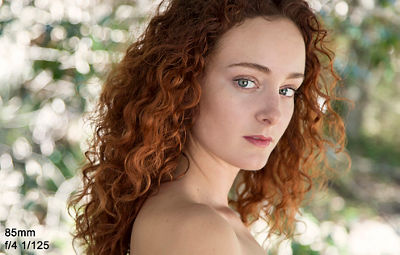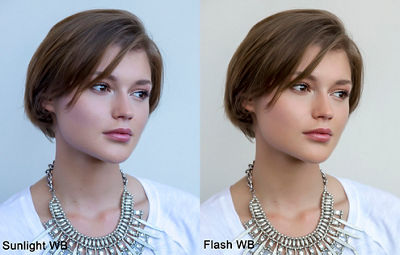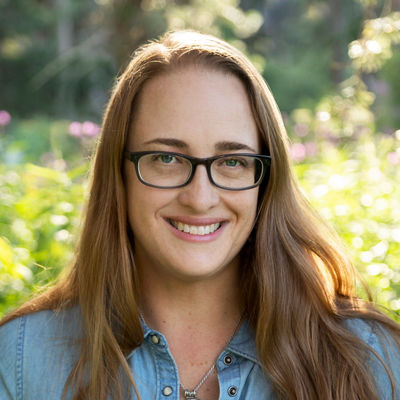When getting started with portraiture, it can be challenging to understand all of your camera’s settings and know the best ones to choose for the results you are after. The goal of this article is to help guide you in the right direction when working with your camera settings for portraiture.
Nailing Focus in Portraits
When it comes to portraiture, a basic rule of thumb is to make sure that your subject’s eyes are in tack-sharp focus. There are exceptions to this rule but in general, if your subject is looking into the camera, their eyes need to be in focus.
Your camera’s Autofocus function is a great tool to ensure that your subject is in focus for every frame. You can manually choose to place an autofocus point on your subject’s eye(s) or you can use your camera’s intuitive autofocus features. Cameras like Canon’s EOS 7D Mark II and EOS 5D Mark IV offer Face Detection capability, even shooting through the viewfinder, which is helpful if your subject is in motion.This works especially well for photographing young children on the move.
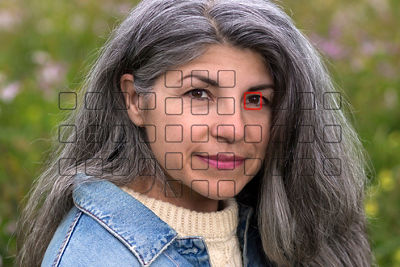
Photographer
Laura Tillinghast Photography
If you are shooting in low light situations or if you’re working with a shallow depth-of-field, a tripod or monopod can be a great help for preventing “camera shake” and achieving a sharp portrait. It’s also important to make sure that your viewfinder’s diopter, or eyepiece, is adjusted correctly. It’s adjusted with the tiny wheel to the side of your viewfinder that allows you to fine-tune the focus of your eyepiece in accordance to your vision. One easy way to adjust the diopter is to remove the rubber eyepiece so you have access to the diopter wheel. Next, simply look through the viewfinder and activate the information panel on the bottom of the viewfinder by touching the shutter button. Finally while looking through the viewfinder, adjust the diopter wheel until the information panel becomes sharp. Don't forget to replace the rubber eyepiece to the viewfinder. Done!
When considering focus, it’s important to choose your f-stop wisely. A popular approach is to set a wide aperture (around f/2.8 - f/5.6) to capture a shallow depth-of-field. This makes the background behind your subject slightly blurred, helping them to stand out better. It’s important not to go too wide, as you usually want your subject to be as in-focus as possible. At the wider apertures such as f/2.8 and f/4, if your subject is turned slightly away from the camera, then often the eye furthest from the lens will not be in sharp focus.
Shutter Speed & ISO
For portraits captured in natural or ambient light, the slowest shutter speed to consider working with handheld is typically 1/60th. Working with longer lenses, such as 200mm or 300mm, you’d ideally want to be around 1/250th or faster. Using shutter speeds slower than this, especially at longer lens focal lengths, can result in shaky captures that are blurry and/or out-of-focus. Consider utilizing a tripod or increasing your camera’s ISO to allow for a faster shutter speed if you’re working indoors or in low light. The only downside of increasing your ISO is that you’ll notice that the “noise” or “grain” in your shots begins to increase as your ISO goes up. When shooting portraits, it’s best to keep your camera’s ISO set to as low a number as possible to ensure detail and minimize digital “noise.”
A good way to control depth-of-field but nail exposure is to shoot in Aperture-priority mode (Av on the Mode Dial of Canon cameras). In this shooting mode you can choose your f-stop manually and then your camera will use its internal light meter to automatically set the shutter speed for a correct exposure. As you move and lighting conditions change, your camera will adjust the shutter speed as needed. This will allow you to concentrate on composition and working with your subject, at a lens aperture you’ve dialed in.
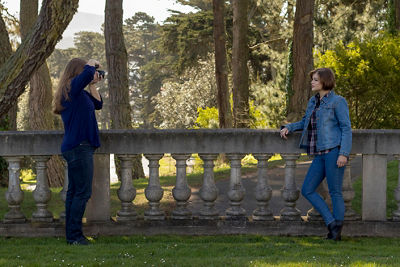
Another thing to consider when shooting portraits is what to do when your subjects are moving. Using a faster shutter speed can help to freeze motion and minimize blur, but you can only push your shutter speed so far when lighting conditions are out of your control (which it often is for event portraiture). Increasing your camera’s ISO can really help to eliminate motion blur. Ideally, for moving subjects in daylight (without flash), you’d want to use shutter speeds of 1/500th or faster.
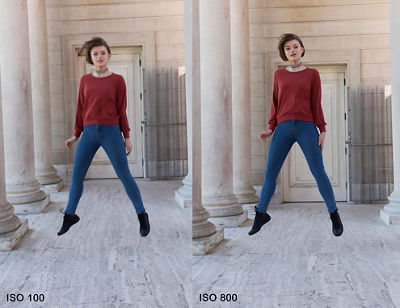
Photographer
Laura Tillinghast Photography
For studio flash lighting or with Speedlites, the maximum recommended shutter speed is generally 1/160th or 1/200th. Most cameras will not sync with an external flash above 1/200th - 1/250th unless they are capable of High-Speed Sync (HSS) and this is usually possible only with Speedlites. Sync speed refers to the fastest shutter speed the camera is capable of using to expose the whole frame at once. Generally, the sync speed varies between 1/125th and 1/250th, depending on your camera. You can work at slower shutter speeds and use flash, but not at faster shutter speeds, unless you use High-Speed Sync.
With High-Speed Sync, the flash fires a great number of times in rapid succession during the exposure in order to expose the sensor evenly across the entire frame. This allows for much faster shutter speeds, which is good for two reasons. First, it allows you to open your camera up to wider f-stops for capturing beautiful portraits with a blurred background — even in bright daylight. Second, a faster shutter speed can allow for freezing motion. This works especially well when shooting dancers, athletes or any portraits with movement. Keep in mind that as shutter speeds get faster with High-Speed Sync active, flash output is progressively reduced, for technical reasons.
File Type
For portrait photography, it is recommended to work with RAW files whenever possible. A very important aspect of RAW vs. JPEG shooting, for portraits or other types of subjects, is how critical settings like White Balance and Picture Style are applied. With RAW image files, White Balance settings can normally be completely changed without losing any detail or pixel information, during RAW file processing. With in-camera JPEGs (or video files), it’s imperative that your White Balance and Picture Style settings are correct at the time of capture, because you cannot simply change them later during post-production. With JPEG files there’s little “headroom” to make significant adjustments, even with high-end image editing software.
Event photographers often choose to shoot both RAW files as well as JPG files simultaneously. This allows them to have JPG files on hand for on-site slideshows or quick turnover to a client, while the RAW files are also being captured. The RAW files are used later for printing and any major editing that needs to be done.
White Balance for Portraits
Your camera’s White Balance setting refers to the color temperature of the light when the image was captured. Portraits captured in sunlight will have a cooler color temperature than portraits captured with indoor tungsten lighting, which has a warmer color temperature. Your camera’s White Balance setting helps to ensure that white shades appear white and that skin tones are rendered accurately. Most cameras come with the option to manually set or adjust white balance. These settings typically include Sunlight, Shade, Tungsten, Fluorescent, etc.
Most of the time using a white balance setting that matches the lighting conditions will result in excellent portraits. However, you can use a warmer White Balance setting with portraiture for a more natural look. In the example below, the portrait on the left was captured in natural light with the Sunlight white balance setting. This resulted in accurate skin tones but a slightly cool tone to the image. In the portrait on the right, the White Balance setting was switched to Flash for a warmer color temperature. The result is more realistic skin tones and a more inviting tone over all. The Cloudy and Shade WB settings will add even more warm, amber tones.
Picture Styles for Portraiture
Canon’s Picture Style settings make it easy to get optimum image quality by choosing from a few overall styles. Each setting has its own subtle look to color rendition, contrast, and sharpening. You can further modify each as needed in your camera’s menu, or with Canon’s Digital Photo Professional (DPP) software.
For portraits, you want to avoid the Landscape Picture Style as it tends to increase saturation in blue and green tones to emphasize a natural landscape. This can look a bit unnatural in portraiture and be unkind to skin tones. The Portrait Picture Style is one place to experiment when you first begin with portraiture, as the color tone and saturation are set to obtain warmer skin tones. Shots will also look great on the back of the camera, which comes in handy if you share your images with your subjects during your portrait session.
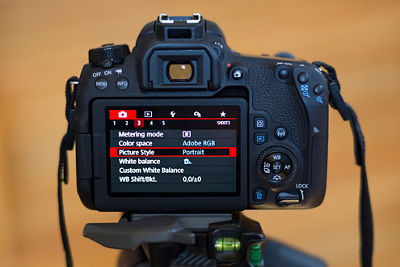
Photographer
Laura Tillinghast Photography
Picture Style Shooting Mode on the EOS 77D
Burst Mode/Drive Modes
Many DSLR cameras offer more than one Drive mode for different shooting conditions. If you select Single Shooting, the camera fires one shot each time the shutter button is fully depressed. This works well for posed portraits and most flash photography.
In Continuous Shooting mode, the camera’s shutter keeps firing for as long as you depress the shutter button fully. This works really well for subjects on the move such as dancers, athletes, performers, etc. For fast motion, you want to use the High Continuous Drive Mode of your camera, in order to capture the maximum amount of shots and not miss any of the action. Even entry-level interchangeable-lens cameras these days can shoot up to three frames per second in daylight conditions, and more advanced cameras can shoot at 5fps or faster.

Photographer
Laura Tillinghast Photography
Full-length action portraits captured with Continuous Shooting Mode
The more you practice these settings and get to know your camera, the easier it will be to capture great portraits. As you get more comfortable with your camera’s Shooting Modes and Picture Styles, you will naturally begin to focus on the other areas of portraiture that are so vital to success, like posing and composition. Practice makes perfect, so get out there and shoot!



